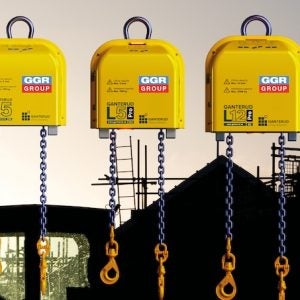The line goes crosses several areas of moorland, which meant instead of the standard steel lattice construction, steel solid-wall pylons had been driven into the ground. A new method was used to complete the job, in which the existing lattice pylons had to be removed and the foundation prepared for the new founding.
The crane was used in combination with a Junttan hydraulic hammer, driving the existing foundations deeper into the ground with the 6t drop weight to create space for the new founding. A steel ring with a diameter of 2m, which later delimits the concrete foundation, was then inserted. Finally, using a pile frame developed by HuP the 15m casing foundations were driven vertically into the ground.
Describing the technique Sennebogen said that specialists require two to three days per mast with the new procedure, which allows the foundation to be subjected to load immediately.
HuP used the 673 for the entire process. The crane has a 36m boom retractable crawler chassis and self-assembly system. Sennebogen said this allowed the 673 to be quickly transported between work sites using a flat-bed vehicle with only 3m transport width, and was then immediately available for operation.
In addition to the founding, the 673 R-HD was used for installation of the power pylons, which measured up to 30m in height.






